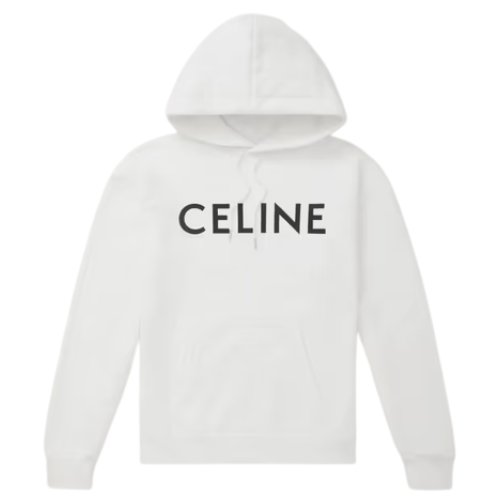
“Celine Hoodie Movement—a Cultural Shift”
In the realm of fashion, Celine Hoodie trends often transcend mere aesthetics, evolving into cultural phenomena that reflect societal values, attitudes, and aspirations. One such trend that has captured the zeitgeist is the Celine Hoodie Movement. Beyond its utilitarian purpose of providing comfort and warmth, the Celine hoodie has become a symbol of cultural significance, embodying notions of luxury, streetwear, and individual expression.
At its core, the Celine Hoodie Movement represents a departure from traditional fashion paradigms. Historically, luxury fashion has been synonymous with exclusivity, catering to elite clientele with exorbitant price tags and inaccessible designs. However, the emergence of streetwear in the late 20th century disrupted this narrative, democratizing fashion by infusing it with elements of urban culture and everyday wearability. The Celine hoodie, with its blend of high-end craftsmanship and street-inspired aesthetics, exemplifies this fusion, bridging the gap between luxury and accessibility.
Moreover, the Celine Shirts Movement is emblematic of a broader shift in consumer preferences towards authenticity and individuality. In an era dominated by mass production and homogenized fashion trends, consumers are increasingly gravitating towards brands that offer unique, artisanal pieces that reflect their personal style and values. The Celine hoodie, with its minimalist design and understated elegance, resonates with individuals seeking to make a statement without succumbing to overt logos or branding.
Furthermore, the Celine Hoodie Movement underscores the evolving nature of luxury in the digital age. With social media platforms democratizing access to fashion and amplifying trends at unprecedented speeds, luxury brands are compelled to adapt to the changing landscape. The Celine hoodie, with its cult-like following on platforms like Instagram and TikTok, exemplifies the power of social media in shaping consumer preferences and driving cultural conversations.
Beyond its sartorial significance, the Celine Hoodie Movement has also sparked discourse around issues of identity, representation, and inclusivity. In an industry long criticized for its lack of diversity, the rise of streetwear has provided a platform for marginalized communities to assert their voices and narratives. The Celine hoodie, with its unisex appeal and inclusive sizing, reflects a more egalitarian approach to fashion, where gender norms and body standards are challenged and redefined.
However, the Celine Hoodie Movement is not without its critiques. Some argue that the commodification of street culture by luxury brands like Celine perpetuates cultural appropriation and erases the authenticity of grassroots movements. Others question the sustainability of fast-fashion cycles and the environmental impact of mass-produced garments. As consumers become more conscious of the ethical implications of their purchasing decisions, brands are under increasing pressure to adopt more sustainable practices and transparent supply chains.
In conclusion, the Celine Hoodie Movement represents more than just a passing trend in fashion—it embodies a cultural shift towards inclusivity, authenticity, and individual expression. As luxury brands continue to navigate the complexities of an ever-changing landscape, the Celine hoodie serves as a symbol of innovation and reinvention, blurring the lines between high fashion and streetwear, tradition and modernity. Whether it’s worn as a statement of style or a symbol of solidarity, the Celine hoodie has undoubtedly left an indelible mark on the cultural fabric of our time.








